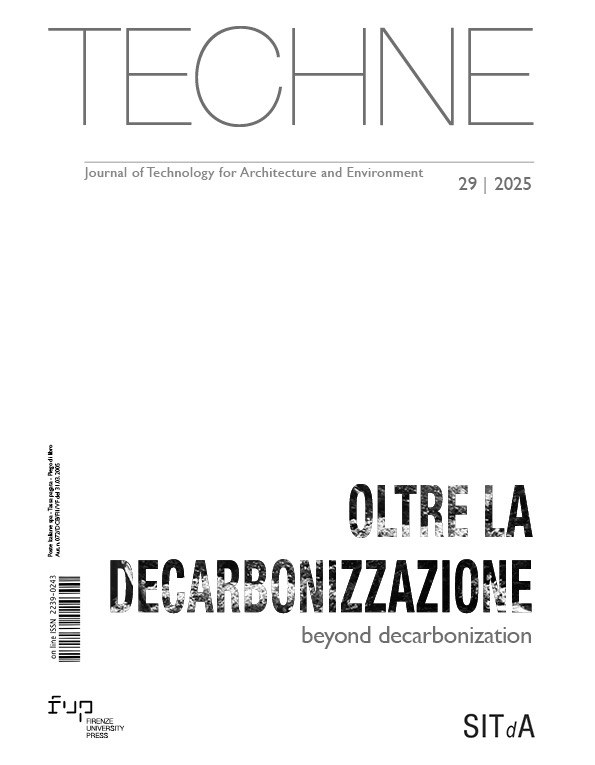Published 2025-07-31
Keywords
- Sustainable architecture,
- Approach to Heritage,
- Mass timber construction,
- Rural reuse,
- environmental design
How to Cite
Copyright (c) 2025 Luigi Ferrara, Veronica Madonna, Stefano Sartorio

This work is licensed under a Creative Commons Attribution 4.0 International License.
Abstract
The Wooler Schoolhouse Project is an experimental effort to renovate a heritage site and create a sustainable approach using mass timber and biobased materials to achieve climate neutrality. The project is the result of a collaborative charrette that brought together the local community, academics, builders, and students worldwide. The result adopts regenerative development to promote a symbiotic relationship between humans and nature, enhancing social and natural capital. It focuses on building adaptable, resilient spaces that encourage social connections, collaborations, and well-being while integrating renewable energy, demonstrating sustainable architecture, and boosting community involvement with environmental education programmes.
Downloads
References
- Bioneers (2022), Designing for a Regenerative Future: What’s Love Got to Do with It? With Jason McLennan. Available at: https://bioneers.org/designing-regenerative-future-love-jason-mclennan/ (accessed on 09/09/2024).
- Butler, T., MacLeod, D., Madonna, V. and Tsang, H. (2021), Carbon Neutral Buildings in Canada – A Holistic Case Study. Sustainability in Energy and Buildings: Research Advances, 9, 36-42.
- Cole, R.J. (2012), “Transitioning from green to regenerative design”, Building Research and Information, 40(1), 39-53. Available at: https://doi.org/10.1080/09613218.2011.610608 (accessed on 09/09/2024). DOI: https://doi.org/10.1080/09613218.2011.610608
- Cucinella, M. (2018), Projects for the Future of the Country’s interior territories Padiglione Italia alla Biennale Architettura 2018, Quodlibet, Macerata.
- ESPON (2017), “PROFECY-Processes, Features and Cycles of Inner Peripheries in Europe”. Available at: www.espon.eu (accessed on 09/09/2024).
- Goddard-Bowman, R. (2014), “Something old is something new: The role of heritage preservation in economic development”. Papers in Canadian Economic Development, Vol. 9, pp. 96-109. Available at: https://openjournals.uwaterloo.ca/index.php/pced/article/view/4002/4957 (accessed on 09/09/2024). DOI: https://doi.org/10.15353/pced.v9i0.23
- Government of Canada (2024), “Rural opportunity, national prosperity: An Economic Development Strategy for rural Canada”. Available at: https://ised-isde.canada.ca/site/rural/en/rural-opportunity-national-prosperity-economic-development-strategy-rural-canada (accessed on 09/09/2024).
- Ismail-Tega, R., Khan, A., Schaffter, C. and Senthilnathan, N. (2020), “Supporting Affordable Housing for Canadian Seniors Living in Rural Communities”. Available at: https://www.mcgill.ca/maxbellschool/article/articles/policy-lab-2020-supporting-affordable-housing-canadian-seniors-living-rural-communities (accessed on 09/09/2024).
- Mang, P. and Reed, B. (2022), “Designing from Place: A Regenerative Framework and Methodology. Statistics Canada. Population growth in Canada’s ruralCanada’s 2016 to 2021”. Available at: https://www12.statcan.gc.ca/census-recensement/2021/as-sa/98-200-x/2021002/98-200-x2021002-eng.cfm?utm_source=chatgpt.com (accessed on 28/11/2024).






